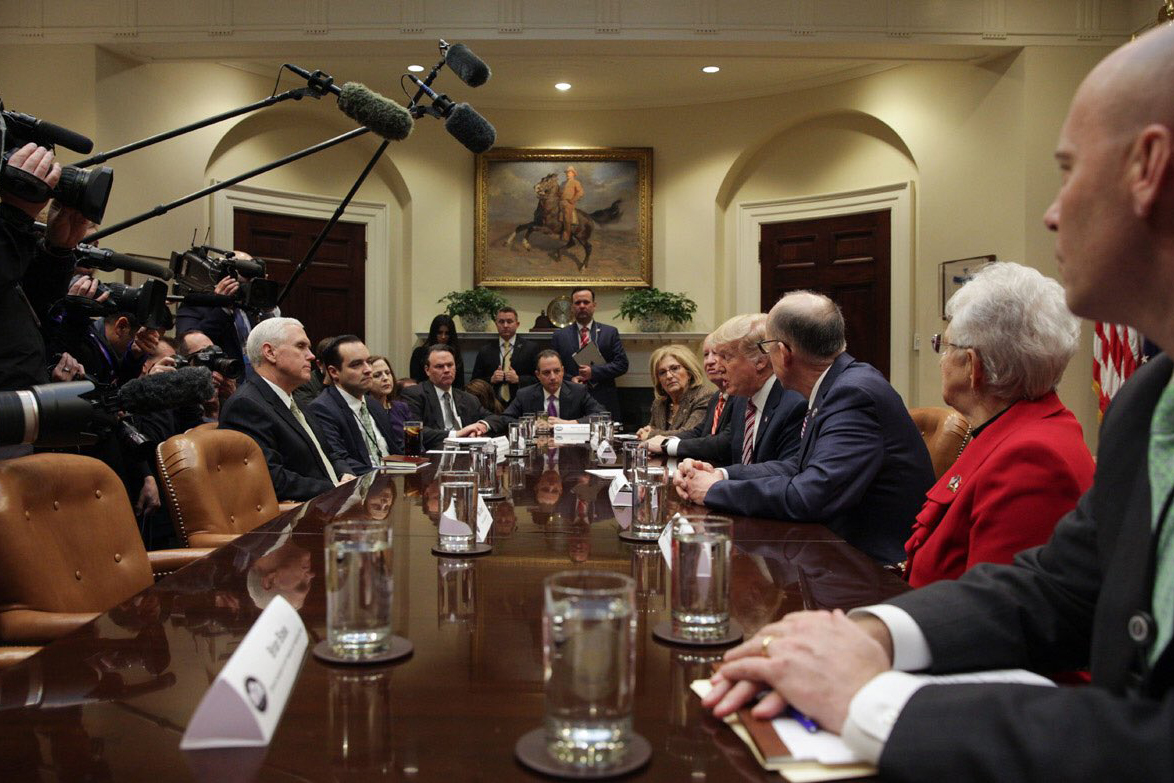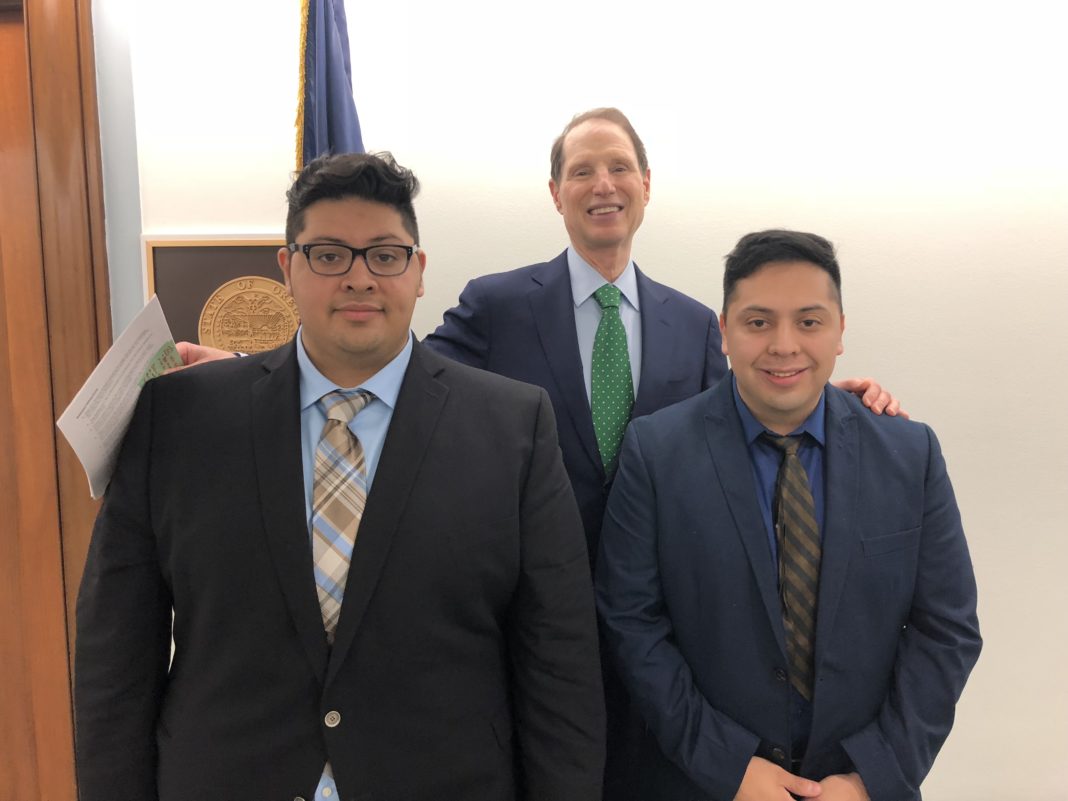The House of Representatives passed Trumpcare, or the American Health Care Act, on May 4. While the bill still has to make it through the Senate before going into effect, the prospect of AHCA passing is terrifying.
“Obamacare [the Affordable Care Act] was based on a one-size-fits-all approach that put bureaucrats in Washington in charge of your health care,” claims the GOP’s health care FAQs page. “The law led to higher costs, fewer choices, and less access to the care people need.”
It is not a secret that many Republicans were against ACA when it was passed in 2010, but is Trumpcare any better?
Proponents of AHCA claim it is more organized than ACA and a better fit for the American people. I took a close look to see who this plan was better for: all Americans or only a few. I tried to glean answers from Oregon DHS and both our senators and representatives to no avail. Unaided by officials, I tried to track down information on the plan myself.
The last ten years: context for AHCA
One of the biggest issues before ACA was pre-existing conditions. Insurance companies could refuse coverage based on any pre-existing condition, including but not limited to asthma, previous and chronic injuries requiring continued treatments and diabetes. To put this problem into perspective, 21.9 million people in the U.S. have diabetes, and 24.6 million people have asthma.
Obama passed laws so people with pre-existing conditions could not be denied coverage, and he expanded the Medicaid program, allowing millions more Americans access to affordable health care. There were tax hikes for those earning over $200,000 per year and fines—2.5 percent of annual income or $695 per adult—for those who opted out of coverage. The major problem with ACA was the price tag—predicted to be $1.34 trillion dollars over the course of a decade. Many businesses also complained about the requirement to offer health insurance benefits to their employees, which cut into some of their profits.
Let’s look at some of the major points defining AHCA.
Pre-existing conditions will still have coverage, but costs may increase
The AHCA bill states that an individual must have continuous coverage, especially with pre-existing conditions. AHCA rates are based more on age and health than ACA. Premiums for young, healthy adults will be lower, but people with pre-existing conditions and older adults will have higher premiums.
Another frightening aspect is the state waiver system, allowing states to apply for waivers to exclude essential health benefit requirements . The safeguard is that states must “attest that their requested waiver was intended to “reduce premium costs, increase the number of persons with health care coverage, or advance another benefit…to the public interest in the state, including the guarantee of coverage for persons with pre-existing medical conditions.”
The amendment provides that the U.S. Department of Health and Human Services “shall approve applications within 90 days of determining the application complete.” This wording makes it sound easy for states to get the waiver for the practice of medical underwriting or determining costs based on pre-existing conditions. One of the biggest questions about pre-existing conditions is whether rape and domestic abuse will be considered pre-existing.
According to the New York Times, this is not entirely correct. Insurance companies will not base prices on whether a person has been raped or abused, but they could base prices on the people receiving treatments, such as PTSD counseling, STD screenings and treatments, and HIV treatments. While a person will not have their coverage denied for having a pre-existing condition, it is likely their coverage cost will increase.
Planned Parenthood and all other similar clinics will be defunded
The AHCA specifies that states may not give any federal funding to a “prohibited entity.” The new Trumpcare plan defines a “prohibited entity” as any entity “that primarily engages in family planning services, reproductive health, and related medical care,” and the bill goes into detail specifically about the clinics that provide abortions unless the pregnancy is the result of a rape or incest or will harm or kill the mother.
Planned Parenthood receives $500 million from the federal government. Note that none of that funding goes toward abortions.
PP offers a variety of treatments and general health appointments, and it now offers transgender services. This loss of funding is a major blow to Americans, of whom 2,840,000 are helped every year by PP. The majority of the funding for PP is through Medicaid, so many women who use Medicaid to go to PP for basic health services will no longer have that outlet.
Medicaid will change in 2020
In 2020 all Medicaid expansion under ACA will be gone. This bill also caps the amount a state can spend on Medicaid. With less funding for state-run Medicaid, the number of people able to receive Medicaid will reduce drastically. According to the Henry J. Kaiser Family Foundation, 58 percent of people on Medicaid are women and 30 percent are ages 18–44.
KFF also reports that 91 percent of the population has coverage under ACA. What will happen when Trumpcare goes into effect? CNBC projects that 24 million Americans will lose coverage, which equals about 70 percent of those who gained coverage under ACA.
Continuous Coverage
A big difference between ACA and AHCA is the continuous coverage policy. In the ACA, lack of medical coverage would result in a penalty of 2.5 percent of a person’s annual income or $695 per adult, as a one-time, annual penalty. This penalty would be revoked if the person obtained coverage. Under the AHCA, an insurance lapse of more than 63 days will result in a 30 percent increase in premium costs. The terms on penalty duration are vague and unspecified, which leads to the assumption that premium cost could remain the penalized price indefinitely.
To better explain, if a person pays $200 per month for regular coverage but becomes uninsured for two months, that person will pay a penalty of $60 more each month or $720 more each year until they die or better health care legislation comes along. Ultimately, AHCA has a more expensive, less forgiving, and longer lasting penalty policy than ACA. It’s just presented in a less straightforward—read the fine print—way.
Individuals will be covered under their parents’ plans until they are 26
On AHCA—just like the ACA—individuals could remain on their parents’ coverage until they are 26 years old.
However, the average age of a PSU student is 26. So this part of the bill would not apply to much of the student body. While it could keep the need for school-based health care services low for younger, dependent students, how does this affect out-of-state students?
Trump claims that his insurance will be able to be bought and sold across state lines. The problem with this is that according to Forbes magazine, “Insurers can sell across state lines in some states, and it hasn’t reined in costs or worked, largely because insurance companies haven’t wanted to spend the money contracting with more doctors and hospitals.”
Health care and Portland State
I contacted the Center for Student Health and Counseling to learn how this possible change in health care legislation would affect students and the PSU insurance policy.
The good news for PSU is that the health program offered at school is not provided through ACA and will not be provided through AHCA. This means students at PSU will not experience any changes to their health care if they receive it through the school. International students will also still have insurance through the PSU plan.
PSU’s mandatory insurance policy isn’t changing, and how many students face the possibility of losing their insurance depends on age, income and pre-existing conditions. Students insured outside of PSU may want to look into making the switch to the PSU insurance to avoid losing or being denied coverage.
AHCA is going to make it more difficult in many ways for people to obtain and pay for coverage. Under AHCA, some Americans will benefit: the young, the wealthy and the healthy. However, women, anyone with pre-existing conditions, low-income individuals, and the elderly will not benefit. Overall, the numbers are not looking good for the average working American.
But here is some good news: The bill has not made it to the Senate yet. What can we do? Start contacting your Senators. Let them know we don’t want a health care system that penalizes the majority of the American people.






